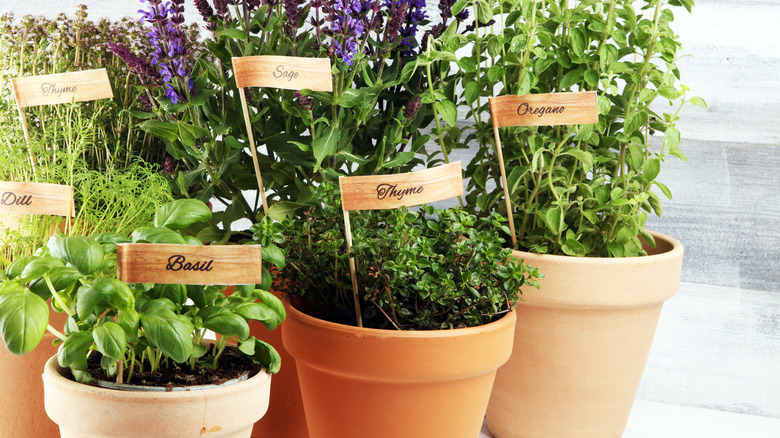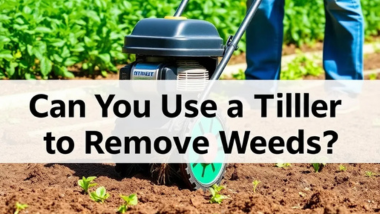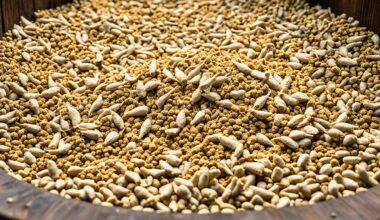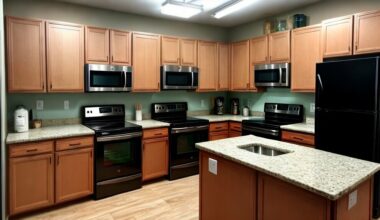You have always been contemplating if you can grow sage in your kitchen. Leading you to ask the question, can you grow sage indoors? Growing sage indoors is easier than you might think. This herb is great for cooking and has health benefits too. With the right care, it can grow well in your home.
Indoor sage gardening gives you fresh herbs all year. It’s perfect for those living in apartments or wanting to grow more food. Sage is easy to care for and doesn’t take up much space, making it a great choice for indoor plants.

This guide will help you from picking the right sage type to harvesting it. You’ll learn how to create the best environment for your plants. We’ll cover lighting and soil, and why having fresh sage at home is so useful.
Are you ready to start growing sage indoors? Let’s explore how to grow sage houseplants and make your indoor gardening a success.
Can You Grow Sage Indoors? Welcome to Indoor Sage Cultivation
Growing sage indoors means you can have the aromatic herb right in your kitchen. Sage is part of the mint family and comes in over 750 varieties. Garden sage, the top choice for cooking, does well in pots and on windowsills. It’s a hardy perennial that fits well indoors, making it great for growing all year.
Potted sage plants need 6 to 8 hours of sunlight each day. Put them near a south-facing window or use grow lights for enough light. They like temperatures between 60-70°F, which is common in most homes. Use soil with 25% coarse grit or perlite to help with drainage.
Growing sage on a windowsill is easy and fun. You can start with seeds, cuttings, or plants from a nursery. Seeds take about three weeks to sprout. For the best taste, pick fresh growth in spring and early summer. Cutting back your sage regularly helps it grow bushy and keeps it from getting woody.
With the right care, you’ll have fresh sage for cooking and health remedies. Remember, you might need to replace sage plants every 3-5 years to keep them productive. By following these tips, you’ll be successful in growing this versatile herb indoors.
Benefits of Growing Sage at Home
Growing sage at home has many perks. You can have fresh herbs all year, no matter the season. It’s great for small spaces, perfect for city living or limited garden areas.

- Year-round fresh supply: By growing sage indoors from seeds, you always have this fragrant herb on hand. With the right care, your sage plant will flourish and give you fresh leaves anytime. Just remember, it needs six to eight hours of sunlight every day indoors.
- Sage fits well in containers. Use clay pots for better drainage. Keep your sage plants 18 to 24 inches apart for healthy growth. This way, you can use your indoor space wisely.
- Low-maintenance herb option: Sage is easy to care for, making it great for beginners. Keep it in a warm spot around 70 degrees F and water when the soil feels dry on top.
- Culinary and medicinal uses: Sage is versatile in cooking and good for health. It’s key in poultry seasoning and holiday recipes. For fresh sage, use two to three times more than dried herbs. Sage also helps with memory and stomach issues.
Choosing the Right Sage Variety for Indoor Growth
Finding the best sage for your indoor garden is exciting. With over 750 varieties, you have many choices. These indoor sage varieties offer fresh herbs all year and save space. Let’s look at some popular ones that do well indoors.
Garden sage: They are also called common sage. It is a top pick for indoor gardens. It does well in containers and is easy to care for. This type likes the sun and dry soil, making it great for sunny windowsills. Put it in a 10-inch pot and water it once or twice a week.
Berggarten sage: It is both pretty and edible. Its big, shiny leaves make your indoor space look beautiful. This type grows compact, perfect for small pots. Keep plants 12 inches apart for the best growth.
Golden sage: adds color with its patterned leaves. It likes full sun and soil that drains well. Plant it in an 18-inch pot with herbs like thyme for a varied indoor garden. Cut it back in spring to keep it bushy.
Purple sage: has striking leaves. It’s perfect for teas and has health benefits. This type draws in helpful insects when outside. Inside, it needs bright light and good air flow to do well.
All sage types prefer sun and dry conditions. Water them a little and feed them once a month for healthy growth. With the right care, these indoor sage varieties will give you fresh herbs all year.
Essential Equipment for Indoor Sage Gardening
Growing sage indoors needs the right equipment for success. A ceramic self-watering planter, at least 8 inches wide, is perfect for your sage plants. This type of container keeps the right moisture levels, which is key for sage.
Your sage plants need a nutrient-rich environment to grow well. Use a free-draining soil mix to avoid waterlogging. Start with a balanced plant food, then switch to a herb blend high in nitrogen as your sage grows. This supports healthy growth from start to finish.
Lighting is key for growing sage indoors. Get a strong grow light that mimics 6+ hours of direct sunlight. This is vital if you’re starting with seeds, as many gardeners find grow lights helpful for seed starting.
For beginners, an all-in-one herb garden kit is a great choice. These kits come with everything you need for indoor herb gardening, making it easy to start with sage. Remember, quality tools like pruning shears can last about 5 seasons, making them a smart investment for your garden.
Setting Up Your Indoor Garden
Setting up an indoor sage garden is simpler than you might think. With the right steps, you can have fresh sage all year. Let’s look at how to make the best environment for growing sage indoors.
- Selecting the ideal container: Choose a container that’s at least 8 inches deep with good drainage. This lets sage roots spread and prevents waterlogging. A pot with drainage holes is key for healthy growth.
- Preparing the soil mix: Sage does well in well-draining soil. Use a potting mix that’s slightly acidic to neutral. Add perlite or sand to help with drainage. Sage doesn’t need rich soil to grow well.
- Planting sage seeds or cuttings: When planting sage seeds indoors, put them 1/4 inch deep. If using cuttings, make sure they’re from healthy plants. Water gently after planting. Let the top inch of soil dry out between waterings to avoid root rot.
Positioning for Optimal Light Exposure
Sage needs 6-8 hours of direct sunlight daily. Put your pot near a south-facing window for the best results. If you don’t get enough natural light, use grow lights.
Position the lights 5-15 inches above the plants and keep them on for 14-16 hours a day.
Keep your sage in a spot with temperatures between 60-70°F for the best growth. Fertilize every 4-6 weeks with a balanced, water-soluble fertilizer. With the right care, your indoor sage garden will do great, giving you fresh herbs for cooking and more.
Caring for Your Indoor Sage Plants

Looking after indoor sage is easy with some key tips. Water your sage deeply but don’t do it too often. It likes dry soil, so wait until the soil is dry before watering again. This stops root rot, a problem from too much water.
Sage needs lots of sunlight to grow well. Put it near a sunny window for the best growth. If your home doesn’t get enough sunlight, growing lights can help.
Feed your sage with balanced fertilizer every 4-6 weeks when it’s growing. Keep the temperature between 60-70°F for the best results. Sage grows well in most indoor places since it’s hardy in USDA zones 4 to 10.
Prune your sage often to keep it looking good and bushy. Cut off any leaves with brown spots to keep it healthy. After about five years, your sage might get woody, so it’s time for new plants.
Sage grows at a moderate pace. It takes about 75 days from seed to when you can harvest leaves. With care and patience, your indoor sage will flourish, giving you fresh herbs all year.
Harvesting and Using Your Homegrown Sage
Growing sage indoors means you can enjoy this tasty herb all year. It’s important to know the best ways to harvest, use, and preserve your sage. Let’s look at how to get the most from your plants.
When and How to Harvest Sage Leaves
Begin harvesting sage when it has plenty of leaves, usually after 2-3 months. Take leaves from the top to help the plant grow more. Young leaves taste better than old ones. Don’t take leaves in the first year to let the roots get strong. Harvest in the morning after the dew has gone for the best taste.
Incorporating Sage in Culinary Creations
Fresh sage makes many dishes taste better. Here are some ways to use it:
- Add to stuffing for poultry
- Infuse in soups and sauces
- Fry leaves in butter for a crispy garnish
- Pair with pasta or gnocchi
Preserving Excess Sage
To keep sage fresh, hang the stems to dry for two weeks, then store in a sealed container. This keeps the flavor for up to a year. Freezing sage leaves also keeps them fresh for a long time. Harvesting often makes the plant fuller and bushier. Cut stems to 4-6 inches tall after they’re fully grown.
Conclusion
Growing sage indoors has many benefits and can make your indoor gardening a success. You can have fresh herbs all year, save space, and reduce effort. With the right care, your sage plants will do well and give you aromatic leaves for cooking and health.
Sage likes full sunlight and soil that drains well. Don’t overwater it, as this can hurt the plant. Most sage plants grow 12 to 30 inches tall, making them great for indoor gardens. Prune them in early spring to help them grow strong.
By following these tips, you’ll enjoy the benefits of growing sage indoors. It’s easy for both experienced gardeners and beginners. Start your indoor sage garden now and have fresh, tasty herbs right at your fingertips.







